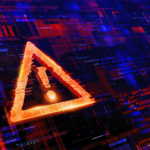Recent Blog
Check on Our Social Media
All Our Blogs
What a Security Operations Center Does to Keep Hackers Out
In our digitally connected world, where every business operation, transaction, and conversation happens online, the importance of cybersecurity cannot be overstated. Data breaches, ransomware attacks, and digital espionage are more frequent and damaging than ever. That’s where the Security Operations Center (SOC) comes into play—a dedicated team that acts as a digital bodyguard for organizations.
Whether you’re a curious beginner, an aspiring SOC analyst, or a business looking to understand how to strengthen your security posture, this guide will give you a clear, beginner-friendly overview of what a SOC is, how it works, and why it’s vital to your defense strategy.
What Is a Security Operations Center (SOC)?
A Security Operations Center (SOC) is the centralized hub of an organization’s cybersecurity defenses. Think of it as the nerve center for detecting, analyzing, and responding to cybersecurity incidents in real time.
Inside a SOC, a team of skilled security professionals work together to safeguard critical digital assets. Their job isn’t just to react after an attack has occurred—they actively monitor networks, hunt for threats, and improve defenses to prevent breaches before they happen.
Why Do Organizations Need a SOC?
The digital landscape is filled with sophisticated cyber threats. Hackers constantly try to exploit vulnerabilities in systems, and without a vigilant team monitoring for signs of compromise, companies are exposed to enormous risk.
A SOC enables 24/7 protection, ensures compliance with data security regulations, and minimizes the damage caused by attacks. It’s not just for large enterprises—even medium and small businesses benefit from having SOC support, whether in-house or outsourced.
Here are some of the core benefits of having a Security Operations Center:
> Continuous monitoring of systems, applications, and networks
> Faster incident response through automated and manual techniques
> Compliance management with industry standards like ISO 27001, GDPR, and NIST
> Improved visibility into the organization’s threat landscape
> Centralized threat detection and response, reducing silos across teams
Inside the SOC: How It Works
A Security Operations Center isn’t just a physical room filled with screens and blinking lights—it’s a structured, process-driven environment. The core responsibility of a SOC is to detect, analyze, and respond to security threats using a combination of technologies and human expertise.
SOC operations rely heavily on SIEM (Security Information and Event Management) platforms that collect logs and data from across the organization. This data is analyzed to detect anomalies, alert analysts of suspicious behavior, and trigger investigations or containment efforts.
The 3-Tier SOC Model
SOC teams are typically organized into three tiers, each with defined roles and increasing levels of responsibility and expertise. Understanding this hierarchy is crucial for both aspiring professionals and businesses looking to build or improve a SOC.
Tier 1: The First Line of Defense – Alert Analysts
Role: Entry-level SOC analysts are the eyes and ears of the organization. Their job is to monitor alerts and logs for signs of suspicious activity.
These analysts are often the first to detect a potential incident.
Responsibilities:
Monitor dashboards and alerts from security tools
Identify false positives and escalate real threats
Follow predefined Standard Operating Procedures (SOPs)
Document incidents and escalate when necessary
Tools Used:
SIEM platforms like Splunk, QRadar, and Elastic (ELK)
Career Tip: This is the best starting point for anyone new to cybersecurity. Learning how to use SIEM tools and follow incident handling procedures builds a strong foundation.
Tier 2: The Investigators – Incident Responders
Role: Tier 2 analysts take over once a credible threat is identified. They analyze the context, determine the cause and impact, and coordinate response efforts.
Responsibilities:
Perform root cause analysis of incidents
Respond to and contain threats
Coordinate with IT teams to mitigate vulnerabilities
Preserve evidence for post-incident reviews
Tools Used:
Endpoint Detection and Response (EDR) tools like CrowdStrike and SentinelOne
Log analyzers and network tools like Wireshark
Career Tip: Gaining 1–2 years of experience in Tier 1, along with certifications like CySA+ or GCFA, is a good stepping stone to this level.
Tier 3: The Experts – Threat Hunters
Role: Tier 3 analysts are senior-level professionals who handle advanced attacks. They proactively hunt for threats that evade automated defenses and investigate complex incidents.
Responsibilities:
Conduct malware analysis and reverse engineering
Perform threat hunting based on threat intelligence
Improve detection rules and refine SOC playbooks
Mentor junior analysts and lead incident response teams
Tools Used:
Volatility, IDA Pro, Ghidra for forensic and malware analysis
MITRE ATT&CK for mapping adversary behavior
Career Tip: Professionals in this tier usually have 5+ years of experience, strong coding/scripting skills, and advanced certifications like CISSP or OSCP.

SOC in Action: How the Tiers Collaborate
A well-functioning SOC operates like a relay team:
> Tier 1 monitors and flags alerts
> Tier 2 investigates and responds
> Tier 3 digs deep and prevents future attacks
These teams must work in close coordination. A suspicious login attempt may be a false alarm or the first sign of a sophisticated breach. Seamless handoffs and clear communication between tiers ensure that no threat slips through the cracks.
SOC Career Path: From Novice to Expert
The journey through a SOC isn’t just about gaining experience—it’s also about building the right skills and earning industry-recognized certifications.
| Tier | Skills to Develop | Tools to Learn | Certifications |
|---|---|---|---|
| Tier 1 | Log analysis, triaging, SOP execution | Splunk, AlienVault | CompTIA Security+ |
| Tier 2 | Malware detection, EDR operations | Wireshark, CrowdStrike | CySA+, GCFA |
| Tier 3 | Threat hunting, forensics, red teaming | Ghidra, Volatility, MITRE ATT&CK | CISSP, OSCP |
Real-World Example: Responding to the Log4j Vulnerability
One of the most critical cybersecurity events in recent years was the discovery of the Log4j vulnerability.
Here’s how a SOC might have handled it:
> Tier 1: Detects unusual outbound traffic from internal systems
> Tier 2: Confirms exploitation of vulnerable applications
> Tier 3: Patches systems, tunes WAF rules, and creates new detection signatures
This multi-tiered response showcases how a SOC’s layered structure enables swift, thorough incident management.
Beyond Threat Detection: Other SOC Functions
A SOC isn’t just about watching alerts. It plays a broader role in organizational security:
1. Tool Tuning and Optimization
Analysts update detection rules and optimize configurations to reduce noise and false positives.
2. Compliance and Reporting
SOC teams generate audit trails and reports required for compliance with data privacy laws and security frameworks.
3. Security Awareness and Collaboration
SOCs often work with other departments like IT, HR, or Legal to coordinate responses and raise security awareness across the company.
4. Continuous Improvement
Every incident teaches something new. SOC teams analyze past breaches and simulate attack scenarios to prepare for the future.

Is Outsourcing a SOC a Good Idea?
Not every organization has the resources to build a full in-house SOC. Many small to mid-sized businesses rely on Managed SOC (MSSP) providers who offer 24/7 monitoring and expert response at a lower cost.
However, businesses must evaluate the trade-offs, especially around response time, control, and data privacy.
Final Thoughts: The Future of SOCs
Cyber threats are evolving every day, and so are SOCs. Artificial Intelligence (AI), machine learning, and automation are increasingly being integrated into SOC operations, helping analysts focus on high-impact tasks.
Whether you’re a business leader seeking protection, a student eyeing a cybersecurity career, or a tech enthusiast exploring the industry, understanding how a Security Operations Center works gives you a vital edge.
References:
NIST Cybersecurity Framework
MITRE ATT&CK Framework
https://radiantsecurity.ai/learn/security-operations-center/
https://dotsecurity.com/insights/blog-why-a-security-operations-center-is-important
https://www.paloaltonetworks.com/cyberpedia/what-is-a-soc
Need help developing cybersecurity policies for your organization? Contact us, we can guide you through the assessment, development, and implementation process tailored to your specific needs and industry requirements.
Location
Nashik | Mumbai | Bengaluru | Dallas
contactus@quasarcybertech.com
Call Now
+91 97306 91190
Quick Links
Our Offerings
Copyright 2025 © All Right Reserved | QLeap Education & Trainings



